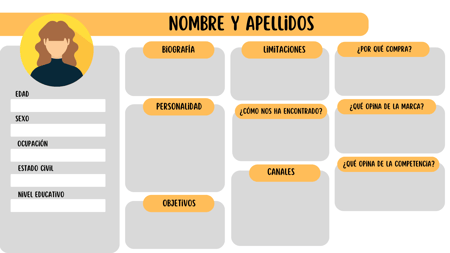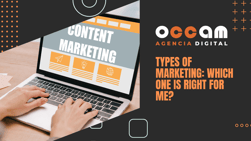Index Content
One to one marketing is a marketing strategy characterised by focusing its actions on user personalisation. It is concerned with cultivating a unique relationship with each user through personalised campaigns. These aim to improve their experience by responding to their interests and needs. It is a relatively recent concept in digital marketing that is positioned as the opposite of mass marketing. Its main difference with mass marketing is that it suggests a hyper-segmentation, making each user special and exclusive.
In one-to-one marketing, the focus is placed on consumers, not on products and services. Thus, the offer presented is of high value and personalised. To perfect it, it is convenient to interact with users constantly. In-depth knowledge of the customer is essential to create an effective campaign. Information about habits, tastes or behaviour with the brand serves to detail their profile. Technological advances and the rise of digitalisation have increased the growth of this technique, turning it into an evolution of personalised marketing. This is due to its dynamism, efficiency and simplicity, which in turn generate a close relationship with the user and guarantee their loyalty.
Characteristics of one to one marketing
- Interaction with the customer
- Focus on user satisfaction
- Contrary to mass marketing
- Personalised products and services
- Adaptability
- Constant optimisation
are one-to-one marketing and micromarketing the same thing?
These concepts should not be confused because, although they carry out a similar process, they do not have the same objective. As its name suggests, one-to-one marketing directs its actions to a single individual, which is why it is also known as individual marketing. In contrast, micromarketing works with hyper-segmentation, but to impact a small group of people.
Advantages of one-to-one marketing
- Improves ROI: The personalisation strategy guarantees an increase in the conversion rate and, consequently, loyalty. The combination of both benefits will lead to better ROI results.
- Increases conversion rate: One to one marketing allows you to focus your strategy on the user. Performing precise actions favouring customer satisfaction will ensure the success of your campaign. Therefore, the cost of acquisition will be reduced.
- Encourages loyalty: If the customer feels valued and listened to by the brand, there is a high probability that they will be loyal to it. The interaction between the company and the user will increase their confidence and clear their doubts.
- Obtains additional data: In order to carry out a correct one-to-one marketing strategy, it is necessary to have information about the user (tastes, needs, fears, etc.). This data can provide us with knowledge about our products and target audience. In turn, it can be analysed, giving us a clearer vision of our business.
- Promotes additional sales: By focusing marketing actions on the user, purchases will increase, leading to an increase in the average sale per customer. The customer will end up buying more than he/she intended if he/she finds a product tailored to his/her needs.
Limitations of one-to-one marketing
- Implementing the strategy involves a higher initial cost. The return on investment is not immediate.
- If the company has a large number of users, it will be difficult to offer a personalised product for each user.
- You need constant product optimisation as customer needs may vary.
- Professionals are needed to create hyper-segmented databases.
How to do one to one marketing
1. Define your buyer persona
To start a one to one marketing strategy, you need to know who you are targeting. To do this, you need to create a profile of your buyer persona. Through this, you can predefine the characteristics you want your ideal customer to have. Here is a template to identify your buyer persona: Once you have done this, you need to gather information about your real customers. This can be obtained through interactions or by using media such as social networks, questionnaires, surveys or focus groups. These should be updated frequently to optimise your strategy.
Once you have done this, you need to gather information about your real customers. This can be obtained through interactions or by using media such as social networks, questionnaires, surveys or focus groups. These should be updated frequently to optimise your strategy.
2. Create a useful database
Once you have all the information, you will need a place to store it and analyse it. It is therefore advisable to create a database. It should allow you to segment all the data into niches and then hyper-segment them in order to individualise them. In this step, you will be able to bias users according to their interest in the brand. This will allow you to focus your attention on potential customers.
3. Tailor your offer
If you know your customers' needs, you will know what to offer them. Tailoring your product to each individual is essential to create an effective one-to-one marketing strategy. This step will determine whether you are working with each user differently or not. The following actions can be implemented:
- Remarketing: This digital marketing tactic will serve to send ads or messages to users who have already interacted with the brand before. The customer will feel that we are following in their footsteps and will pay attention to what we have to say.
- Personalised products: It may be obvious, but it ensures the personalisation of the user. Including their name or favourite colour on the product will ensure the adaptability of the offer.
- Recommendations: Depending on the interactions with the brand's website, the user will be recommended one product or another. This saves time for the customer and ensures that the company can meet their needs because it knows what they like.
4. Work on the customer relationship
Forging a good relationship between customer and company is key to offering a good service. There is no point in personalising a product if you do not take care of the customer by making them feel special. To achieve this, it is important to interact with users. It is advisable to be friendly and initiate dialogues with potential customers. Email marketing can be used to send personalised emails in an automated way.
5. Promote feedback
In order to measure the success of your campaign, you should collect data about the opinions of the brand. This will help you to optimise your services. Satisfaction surveys and feedback channels will help you to set this process in motion.
Tools for one-to-one marketing
- Big Data: In one-to-one marketing, data processing is essential to create campaigns. For this, Big Data applications are needed to collect information and store it properly. Tools such as Hadoop or Apache Storm can be useful.
- CRM: For any marketing strategy, a CRM is a great help. They offer user relationship management and help to create more effective campaigns. Some of the most commonly used CRMs are HubSpot or Salesforce.
- Business Intelligence: This group includes tools related to analysis, troubleshooting and cost reduction. Software such as SAS, SAP or Microsoft Power Bi can carry out these actions.
Examples of one to one marketing
Coca-Cola: Launched a fun one-to-one marketing campaign with the slogan "Share a Coke with". It consisted of naming the cans and bottles of soft drink with names, with names of family or emotional relationships such as "Your friend" or "Your boyfriend" printed on them. Spotify: The platform recommends playlists based on the music listened to by the user in the last few days. These offer diversity between music genres, artists and songs. This ensures the user is sure to hear what they like and meet new artists that match their interests. These recommendations are given attention-grabbing names such as 'Especially for you' or 'Based on recent listening'.
Spotify: The platform recommends playlists based on the music listened to by the user in the last few days. These offer diversity between music genres, artists and songs. This ensures the user is sure to hear what they like and meet new artists that match their interests. These recommendations are given attention-grabbing names such as 'Especially for you' or 'Based on recent listening'.





